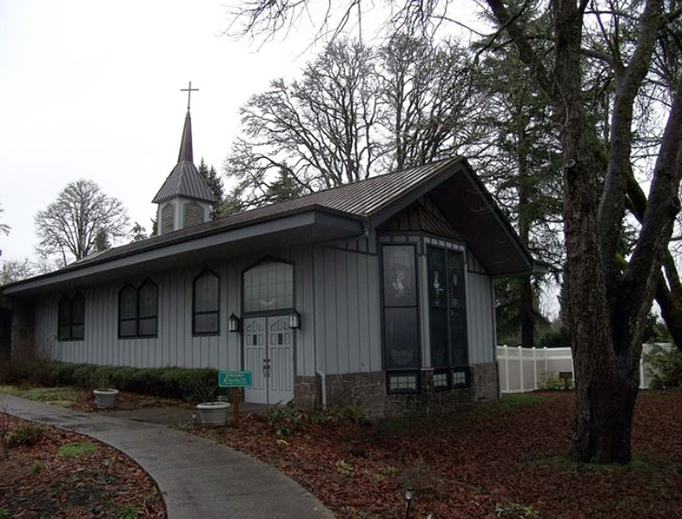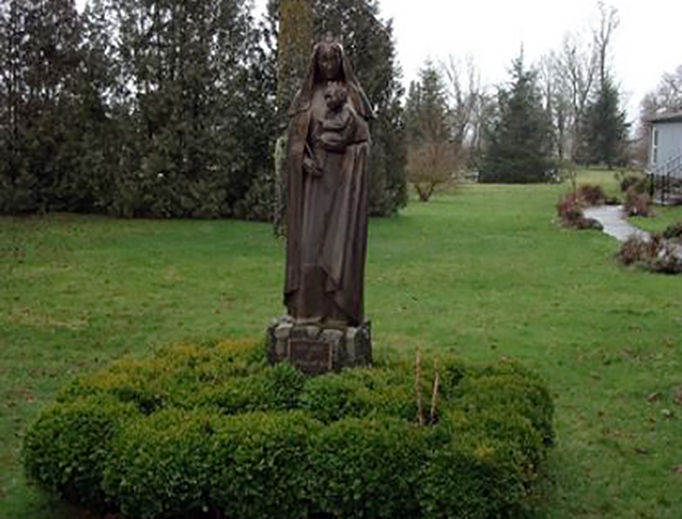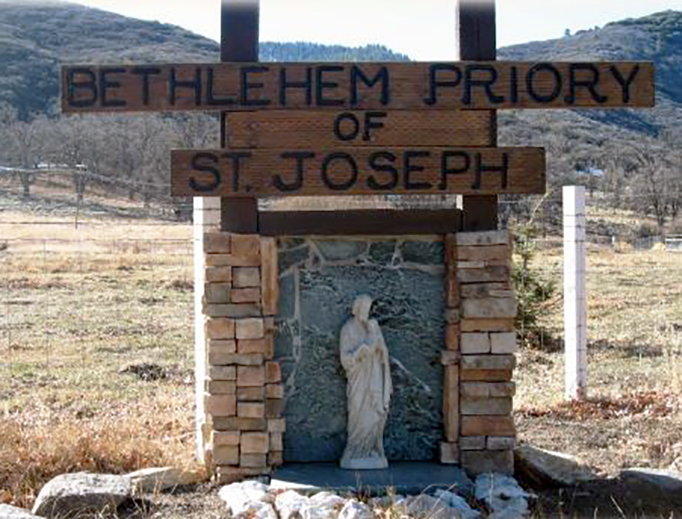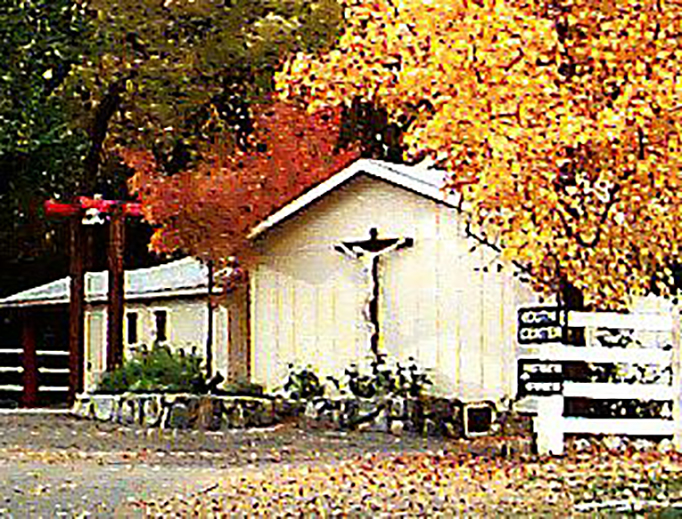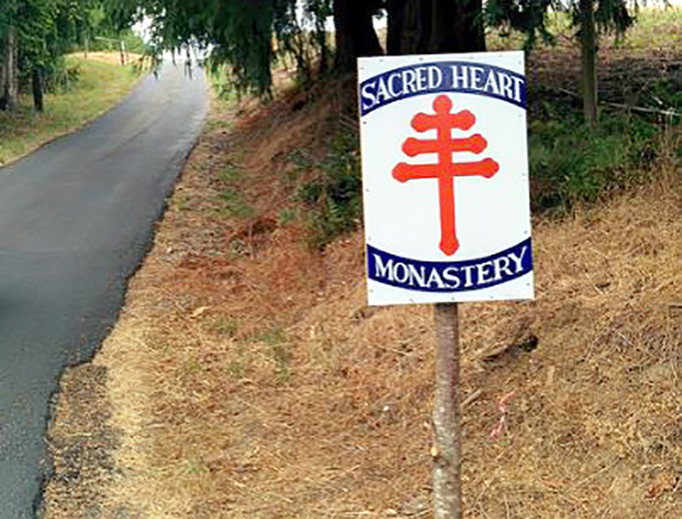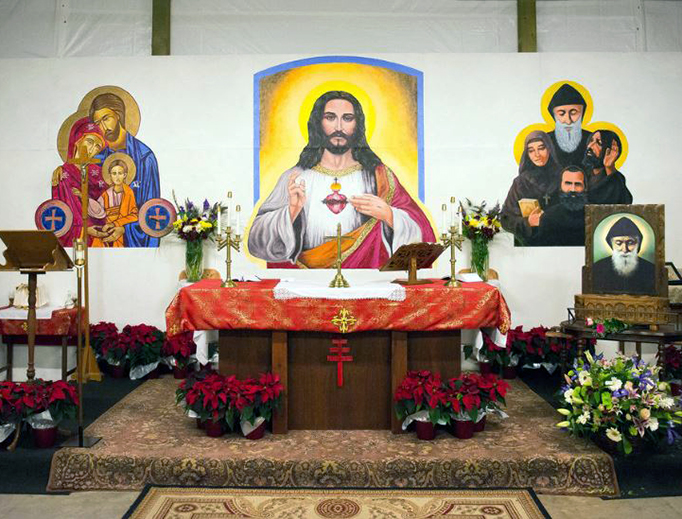Western U.S. Religious Communities that Welcome Visitors
Here are four communities on the West Coast that you might like to stop by and see.

While some religious communities are cloistered and don’t ordinarily welcome visitors, others want outsiders to join them for Mass and devotions, retreats or to offer things for sale which are made by the community. The following are four such communities you may not have heard of on the West Coast that you might like to stop by and see.
Brigittine Monastery/Priory of Our Lady of Consolation (www.brigittine.org), 23300 Walker Lane, Amity, Oregon – The Brigittine community is made up of six brothers and two postulants. Its members wear a gray habit, and are devoted to prayer and contemplation. In addition to Mass, the monks sing the Liturgy of the Hours, say the rosary and engage in spiritual reading. The brothers are especially committed to praying for the souls in purgatory and for the conversion of sinners. The community does not engage in any active apostolic works; they are quiet contemplatives.
The community was originally founded in 1370 by St. Birgitta of Sweden; its monks existed from the 14th to the 19th century. The Brigittine monks were refounded in 1976 by Brother Benedict Kirby.
Join the community for Mass Monday – Saturday at 8 a.m. or Sunday at noon. Mass is celebrated by the community’s chaplain, who is not part of the community (they are brothers, not priests).
The community attempts to be self-supporting through the sale of gourmet fudge. The gift shop is next to the chapel and is open Monday – Saturday, 9 a.m. – 5 p.m. and Sunday, 1 – 5 p.m. Or, you may order the fudge online on their website.
Bethlehem Priory of St. Joseph (www.norbertinesisters.org), 17831 Water Canyon Road, Tehachapi, California – The Norbertine Sisters, or “the sisters in the mountains” as the locals call them, are affiliated with the Norbertine Fathers of St. Michael’s Abbey in Orange County, California. The sisters are called canonesses rather than nuns. They are a cloistered, contemplative community founded in 1997. The original five members occupied a house opposite the El Toro abbey before moving to the mountains of Tehachapi in the Diocese of Fresno in 2000. The priory is located in the mountains, amid many beautiful old oak trees, meadows and a duck pond. It has a 5,450 feet elevation, and it gets cold and snows in the winter.
The grounds include a gift shop, where you are welcome to come and buy handmade religious items, as well as jams, honey, soaps, salves, powders and candles made from things grown on the grounds. The sisters also sew and crochet such items as tote bags and aprons. Gift shop hours are 10 – 11:30 a.m. and 2:30 – 5 p.m. (Closed Friday at 4 p.m.) You can also buy items online at the community website.
There is a small chapel on the grounds, in which Mass is celebrated daily at 8:30 a.m., except Fridays when it is celebrated at 5:15 p.m. On Sundays, there is no public celebration of the Mass. Mass is celebrated by a visiting Norbertine priests; there are 40-plus sisters.
The sisters operate a Bethany Guest House, which is available for overnight stays for women discerning vocations and friends of the community. People can also come on private retreats. The sisters’ lifestyle is rigorous, and includes eight hours of prayer a day. This includes lights out at 9 p.m., rising for midnight prayer, and rising again at 5:20 a.m.
St. Andrew’s Abbey (www.saintandrewsabbey.com), 31001 N. Valyermo Road, Valyermo, California – St. Andrew’s Abbey is a Benedictine monastery. It is located on the edge of the Mojave desert on the north side of the Angeles National Forest (on the south side is the Pasadena area). It came to the Los Angeles Archdiocese at the invitation of Cardinal McIntyre in 1955; the monks originally founded the community in China in 1929, but the monastery was closed and the monks forced to leave when the communists took over the country.
The site was formerly a ranch which was converted into an abbey. Its purpose is to carry on the tradition of the Order of St. Benedict, whose motto was Prayer and Work. The facility is open for private and group retreats; visitors are also welcome to spend the day, walk the grounds and have lunch (donations are requested for lunch). The Abbey also has a book and gift shop. Mass is daily at noon.
About 20 priests and brothers call the Abbey home. Men ages 21-45 discerning a vocation are encouraged to inquire. There is also an oblate program for anyone wishing to participate in the spiritual life of the monastery; meetings are held monthly at St. Andrew’s as well as at locations throughout Southern California.
Sacred Heart Maronite Monastery (www.maronitemonastery.org), 2308 Delameter Road, Castle Rock, Washington (One hour north of Portland on I-5) – The Maronite Monks of Jesus, Mary and Joseph is a new community founded in 2011. In 2014, the monks purchased their 65-acre site in southwestern Washington state. The community seeks to raise $3 million to build the monastery, which, once complete, will be home to up to 20 monks.
The monks follow a strict schedule, including rising at 3 a.m. to pray, Divine Mysteries at 6:30 a.m. and periods of work and community prayer. They wear a black habit and belt (iskeem), a crucifix around the neck and a beard. They operate under the authority and with the support of Bishop Elias Zaidan, who is in union with Rome. The community survives on donations; eventually, the monks hope to pay their expenses by farming.
The monks currently live in a home in Beaverton, Oregon. Visitors are not allowed in the monks’ home, but are welcome to attend public events at the monastery site in Castle Rock. Divine Mysteries/Mass is currently being held in a barn converted to a church at the Castle Rock site. The Divine Mysteries in their Maronite rite make use of the Syriac language, a form of Aramaic which Jesus spoke. Priests also wear different vestments from the Latin Rite. The Divine Mysteries place a great emphasis on the Trinity and the Holy Spirit.
During Divine Mysteries or devotions such as the rosary or chaplet, visitors can come, sit in chairs in the back of the church, and follow along with prayer books which are provided. Click on the events tab of the website to see upcoming events.
The monks do greet people at special events, but are cloistered and typically stay away from the public. Volunteer lay people help the monks with a variety of functions, such as working on the grounds.
